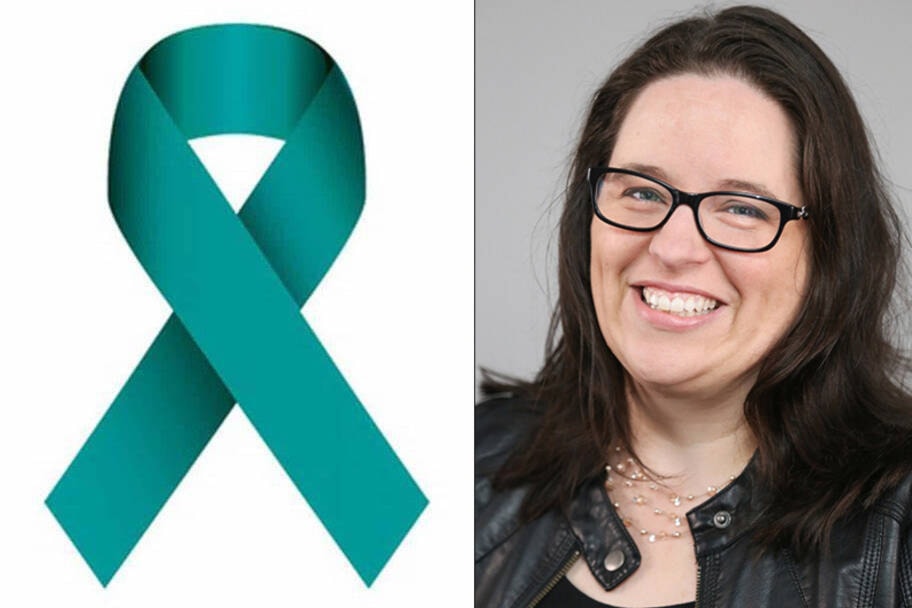Cervical cancer isn’t all that common in Canada, and that’s a great thing.
It’s being caught early and dealt with neatly. Vaccination is being accepted. Last year, it was estimated that 1,450 Canadians would be diagnosed with cervical cancer and an estimated 380 would die from it.
But those kind of numbers mean a few things. There are misconceptions, stigmas that still linger, and even a medical community that is getting less and less hands-on experience with invasive cervical cancer patients.
For example, my gynecologist can count his current cervical cancer patients on one hand, and we range in ages. Thankfully, he’s very educated on cervical and other gynecological cancers, and how damaging the disease and the treatment is to a body.
When he diagnosed me in an emergency room, I sighed in relief. He sighed for a different reason. He had seen my near future before in other patients.
January is cervical cancer awareness month around the world. When I was diagnosed with an invasive case in 2018, I immediately began a personal crusade of speaking publicly about the issue.
About a year later, I was invited by the Union for International Cancer Control to speak in Vancouver at an international conference called Women Deliver. It was there I learned that the World Health Organization has set a target to eradicate cervical cancer by the end of this century, with a goalpost in 2030.
The International Agency for Research on Cancer (IARC) says that to eliminate cervical cancer as a public health problem by 2100, all countries must reach and maintain an incidence rate of fewer than four new cases of cervical cancer per 100,000 women per year.
The 2030 measuring targets include having 90 per cent of all girls fully vaccinated with an HPV vaccine by 15 years of age, that 70 per cent of women are screened using a high-performance test by the age of 35 years, and again by the age of 45 years, that 90 per cent of women with pre-cancer are treated and 90 per cent of women with invasive cancer are managed.
We have just seven years to go.
In the four and half years since my diagnosis, I’ve watched new online American and international friends advance in their disease and die, fighting with their insurers. At Women Deliver, I heard stories of women being “sent home to die in church, praying.”
I had no idea. But I also had no idea that forgetting a pap smear could result in months of cancer treatment and lifelong health issues.
While Canada’s numbers are improving, they aren’t so rosy around the world. In 2020, an estimated 604,000 women were diagnosed and about 342,000 of them died from the disease. Not surprisingly, most of these cases and deaths (about 90 per cent for both) occurred in low- and middle-income countries.
And a lot of that is due to cultural norms in countries where women don’t talk to their male doctors about things like menstrual bleeding or pain. In some places, there are just no medical staff. In others, there is a lack of information.
It makes eradicating this disease seem like a lofty goal. And with Canadian women being so well-cared-for, and often caught in such early stages we may not even speak about it, cervical cancer can often fly under the radar as a concern.
It certainly didn’t seem important to me, until it was.
Back when I was a teenager, I was told that cervical cancer was something that only promiscuous women got. So, the longer I was married, the less I worried about this issue.
It’s impossible to know when I contracted HPV. It can sit dormant (and undetectable) for decades, and then begin to grow when your immune system is down. It’s impossible to know when that happened for me, because it’s such a slow-growing cancer (usually). It was sometime between that last pap smear and when my symptoms started a short few years later.
And honestly, none of that even matters. There is no blame to be assigned, no villain in this story. But there are heroes. They are the doctors who stay informed of cervical and other gynecological cancers and their symptoms. They are the researchers who are finding new ways to eliminate this terrible disease.
And they are the women, as well as transgender and non-binary people, who are fighting for their health care, here and around the world.
To learn more about cervical cancer, visit cancer.ca.
@CHWKcommunity
jessica.peters@abbynews.com
Like us on Facebook and follow us on Twitter.



